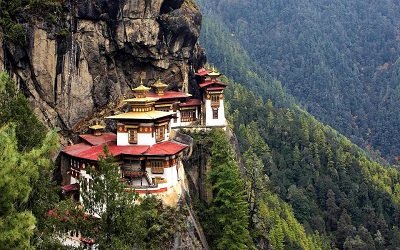National Museum of Bhutan (Ta Dzong)
The National Museum of Bhutan, housed in the historic Ta Dzong, stands as a testament to the kingdom's rich cultural heritage. Built in 1649 as a watchtower and converted into a museum in 1968, this circular six-storey building offers visitors an unparalleled journey through Bhutan's artistic, cultural, and natural history.
Located in Paro district above the iconic Rinpung Dzong, the museum showcases an extensive collection of thangka paintings, traditional masks, ancient textiles, rare stamps, and religious artifacts that tell the story of Bhutan's unique Buddhist culture and traditions.
The Ta Dzong's unique circular architecture, inspired by a conch shell, makes it one of the most distinctive museum buildings in the world, perfectly complementing its precious collections.
